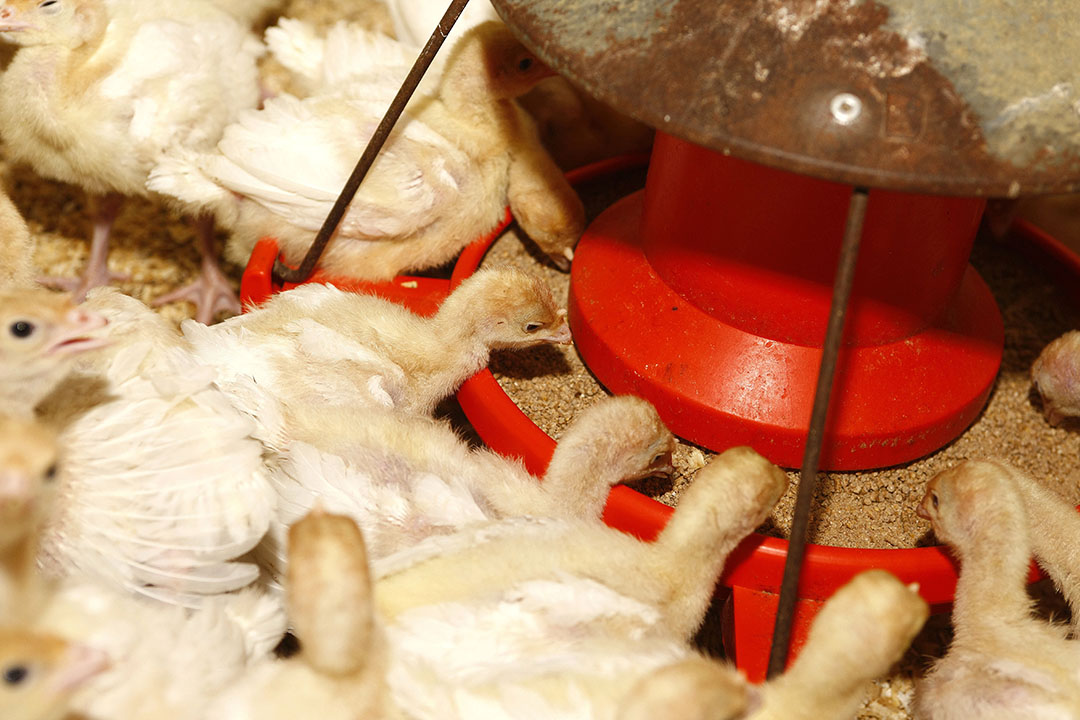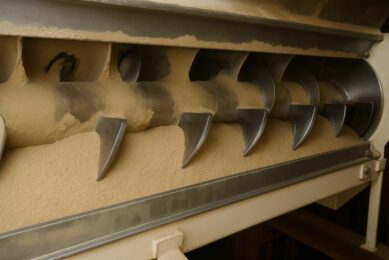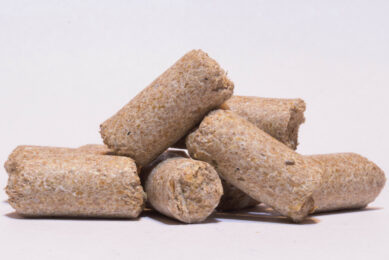Turkey feed: Structure affects performance

The physical quality of poultry feed is becoming ever-more important as genetics improve, allowing birds to use more of the nutrients available in rations. Here, All About Feed reviews two trials that suggest physical quality may have a much greater impact on turkey performance than previously realised.
It has long been understood that the physical form, processing and particle size of poultry feed can all have an impact on bird performance, with work stretching back more than 30 years ago confirming that fact. And it is still very much the case today, Aviagen Turkeys nutritionist Marcus Kenny told the 13th Turkey Science and Production Conference. A 1986 study evaluated the performance of male turkeys split into two groups, with one fed a regular pellet and the other broken pellets. The results were a striking 6.3% reduction in bodyweight for the flock fed lower-quality feed and a feed conversion ratio that was 3% higher by 167 days of age. More recent comparisons of birds fed varying-quality diets appear to confirm the trend, and suggest that modern turkeys may be even more responsive to the feed’s physical quality.
Different diets
Work conducted in Aviagen Turkeys facilities in the UK compared a control group fed a ‘good’, diet based on crumbs and intact pellets with minimal levels of fine particles (<1mm) of feed present. in contrast, a diet with poor physical quality that contained a high proportion of fine feed particles was offered to a second group in the trial. both rations were formulated to breed-recommended nutrient specifications. when it came to creating the poor-quality diet, a novel approach was taken. “we took intact pellets with a very small number of fines and passed them through a mobile hammer grinder. that pulverised them down to a very fine consistency,” says mr kenny. “we believe that was important to get a very homogenous breakdown of those pellets to achieve a very consistent representation of poor feed quality.” that was then combined with pellets in a 50:50 mix to create the ‘poor’ diet. “if you actually compare that preparation between some of the samples we have seen over the years in the field, you might struggle to identify that preparation,” suggests mr kenny.>
Dramatic effect
The effect in feed conversion ratios was dramatic,” he explains. The turkeys fed the ‘poor’ diet had a 12.3% reduction in bodyweight loss relative to the control, and a 36% deterioration in feed conversion by 20 weeks.
“The effect of feed form on bodyweight was evident through the lifetime of the birds and was detected as early as three weeks of age and continued, with increasing effect, to the end of the trial period,” Mr Kenny says. “In an attempt to explain the effect on FCR the first immediate suspect is feed wastage. In the field we very often see pellets and crumbs that have been discarded from the litter – perhaps if they are too hard, it can very often happen.” But the researchers on the trial could not find evidence of significant feed wastage. In reality, finer particles tend to pass through the gizzard more quickly, resulting in poorer digestion of feed consumed.

Increased activity
It was also observed that bird activity was increased, “We know that increased feeding activity is observed when the physical quality of the feed is poor,” he explains. “We saw birds congregate around feed more often. That’s going to divert nutrients away from growth towards supporting activity.” A further study introduced an intermediary quality diet, with a 75:25 ratio of pellets to fines. With the three rations fed to three groups, a “very predictable, almost linear decrease in liveweight” was observed.
Importance
The two trials show the effect of feed quality may be greater than previously anticipated, says Mr Kenny. “In particular, the magnitude of effect on feed conversion ratios was unexpected.” The data suggests birds fed the poor diets ate significantly more than the control flocks but did not convert that extra feed into bodyweight. And the effect is more pronounced than that seen in similar recent evaluations with broilers, suggesting there may be more of an opportunity to improve turkey performance by providing a high crumb and pellet quality, says Mr Kenny.
Improvements
There are a number of ways that a mill can improve poor physical quality and pellet durability, one of the main areas where improvements can be made are in the grinding, conditioning and pelletising processes. “Changes to diet formulation can also have an effect – for example even a 5% addition of wheat-based materials in a maize based diet can improve pellet durability significantly,” says Mr Kenny. “The results reinforce the potential of feed form in improving performance and why feed physical quality should be continuously assessed,” concludes Mr Kenny. “Monitoring the feed’s physical quality in the mill and also on the farm is vital to ensure that feed form is continuously meeting standard.” Furthermore, adds Mr Kenny, communication between all parties is important, in ensuring the needs of modern turkeys are understood and met.
*This report is based on a presentation delivered at the 13th Turkey Science and Production Conference.
Assessing the physical quality of feed Physical quality is usually measured with a sieving assessment of crumbs, as well as a durability test of pellets, which is normally conducted in the mill with specialist devices like a Holmen or tumbling tester. Pellet durability greater than 90% is usually considered acceptable. On farm testing is also important to give an accurate idea of what is actually being provided to birds. A hand sieving device can be utilised by a farm manager, and the most effective place to take a sample of feed is directly from the pan. |











